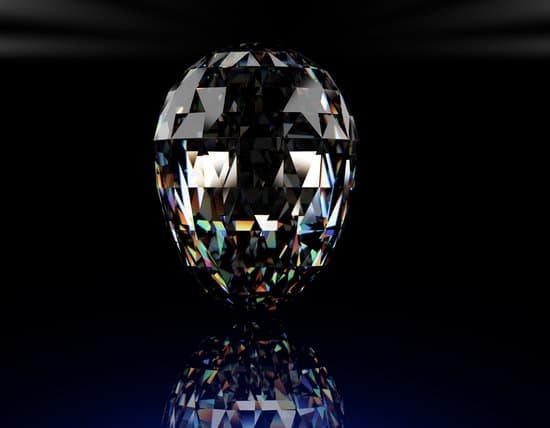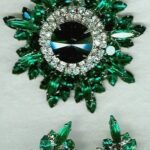The history of Navajo jewelry making dates back centuries, with a rich tradition and cultural significance. The artistry and craftsmanship of Navajo jewelry have become renowned worldwide, showcasing intricate designs and traditional techniques that have been passed down through generations. This article delves into the origins, techniques, significance, influences, evolution, famous makers, and cultural importance of Navajo jewelry making.
The tradition of Navajo jewelry making has its roots in the Southwest region of the United States, where the Navajo people first began crafting pieces using materials such as silver and turquoise. Through this art form, they have expressed their cultural identity and storytelling traditions, creating timeless pieces that hold great symbolic value within their community.
Exploring the origins of Navajo jewelry making allows us to understand the deep connection between the art form and the Navajo people’s history, values, and traditions. From traditional designs to modern innovations, the legacy of Navajo jewelry making continues to captivate admirers around the world.
The Origins of Navajo Jewelry Making
The Navajo people have a rich history of jewelry making that dates back centuries. This art form, passed down through generations, holds great cultural and symbolic significance for the Navajo tribe. The origins of Navajo jewelry making can be traced back to the 1800s when the tribe learned silversmithing techniques from Spanish settlers and Mexican metalworkers.
During this time, the Navajo people incorporated their own unique style and designs into the jewelry-making process, eventually developing a distinct Navajo jewelry aesthetic. Traditional techniques such as stamp work, bead setting, and stone cutting were honed and perfected over time, resulting in the exquisite pieces that are still treasured today.
The history of Navajo jewelry making is deeply intertwined with the tribe’s spiritual and cultural beliefs. Jewelry was not only worn for adornment but also held symbolic meanings relating to nature, spirituality, and protection. For example, turquoise – a gemstone highly revered by the Navajo – was believed to bring good fortune and ward off evil spirits when worn as jewelry. The incorporation of turquoise into their designs became a hallmark of Navajo jewelry making.
Today, the legacy of traditional Navajo jewelry making continues to thrive as artisans preserve age-old techniques while also incorporating modern influences into their designs. The evolution of this art form has made Navajo jewelry sought after worldwide for its timeless beauty and cultural significance.
Traditional Navajo Jewelry Designs and Techniques
The history of Navajo jewelry making is rich and storied, with its roots dating back to the 19th century. Traditional Navajo jewelry is known for its use of silver, turquoise, and other semi-precious stones, as well as intricate designs that are meaningful to the Navajo people. The techniques used in creating Navajo jewelry have been passed down through generations, preserving the art form and cultural significance.
One of the most iconic designs in traditional Navajo jewelry is the squash blossom necklace. This design features silver beads interspersed with beads resembling squash blossoms, traditionally made with turquoise or coral stones. Another popular design is the concho belt, which consists of large oval or rectangular silver plates adorned with stampwork and set with turquoise or other stones. These designs showcase the high level of skill and artistry involved in Navajo jewelry making.
The techniques used by Navajo silversmiths are also an integral part of the tradition. Silversmiths carefully shape and mold silver into intricate designs, often incorporating symbols that hold spiritual significance. Many traditional pieces also feature stampwork and hand-stamped patterns that add texture and depth to the jewelry. The use of hand-cut cabochon stones further showcases the craftsmanship and attention to detail that goes into each piece of traditional Navajo jewelry.
| Traditional Designs | Techniques |
|---|---|
| Squash Blossom Necklace | Silversmithing |
| Concho Belt | Stampwork |
| Cabochon Stones | Hand-stamping |
The Significance of Turquoise in Navajo Jewelry
Turquoise holds a special place in the history of Navajo jewelry making, as it is one of the most widely used and significant gemstones in traditional Navajo designs. The use of turquoise in jewelry making dates back centuries and has deep cultural and symbolic importance for the Navajo people. Turquoise is often referred to as the “sky stone” by the Navajo, and it is believed to bring good fortune, protection, and strength.
The significance of turquoise in Navajo jewelry can be seen in the various traditional designs that feature this beautiful gemstone. From squash blossom necklaces to concho belts, turquoise is prominently featured in many iconic pieces of Navajo jewelry. In addition to its aesthetic appeal, turquoise also holds spiritual significance for the Navajo people, symbolizing wisdom, power, and happiness.
In traditional Navajo culture, the sourcing and mining of turquoise was considered a sacred practice. The stone was believed to have been created from a piece of the sky that fell to earth, and it was mined with great reverence and ceremony. Today, the use of turquoise continues to be a central element in Navajo jewelry making, both preserving tradition and evolving with modern design trends.
- The deep cultural significance of turquoise for the Navajo people
- Traditional Navajo designs that prominently feature turquoise
- The sacred practices surrounding the sourcing and mining of turquoise in Navajo culture
Influences on Navajo Jewelry Making Throughout History
Throughout the history of Navajo jewelry making, there have been many influences that have shaped the art form into what it is today. One of the earliest influences on Navajo jewelry making can be traced back to the Spanish arrival in the Southwest in the 16th century.
The Spanish introduced silversmithing techniques to the Navajo people, which greatly impacted their traditional jewelry designs and techniques. This merging of Spanish metalworking techniques with traditional Navajo styles resulted in a unique and distinct form of jewelry making.
Another significant influence on Navajo jewelry making came during the mid-19th century when trade routes were established between the Navajo people and other indigenous tribes, as well as European settlers. Through these trade routes, the Navajo people had access to a wide range of materials, such as silver, turquoise, and coral, which significantly expanded their artistic capabilities and allowed for greater creativity in their jewelry designs.
The influx of new materials also allowed for experimentation with different styles and designs, leading to the creation of innovative pieces that were both aesthetically pleasing and culturally meaningful. Additionally, the blending of different cultural influences during this time period contributed to the rich tapestry of designs seen in Navajo jewelry today. As a result, historical events and cultural exchanges have played a crucial role in shaping the evolution of Navajo jewelry making throughout history.
Evolution of Navajo Jewelry Making in Modern Times
Navajo jewelry making has a rich history that has evolved over centuries, and it continues to thrive in modern times. In recent years, traditional Navajo jewelry making techniques and designs have been passed down through generations, ensuring the preservation of this art form. However, contemporary influences and innovations have also contributed to the evolution of Navajo jewelry making in modern times.
One significant development in modern Navajo jewelry making is the incorporation of non-traditional materials and techniques. While traditional pieces are often crafted using silver, turquoise, and other natural stones, contemporary Navajo artists have begun experimenting with different metals and gemstones. This evolution has resulted in a diverse range of styles that appeal to a wider audience.
Furthermore, the rise of technology has allowed Navajo jewelry makers to reach global markets through online platforms and social media. This increased visibility has not only expanded the reach of Navajo jewelry but has also created opportunities for collaboration with artists from different cultural backgrounds. As a result, modern Navajo jewelry pieces often reflect a fusion of traditional techniques with contemporary aesthetics, appealing to collectors and enthusiasts around the world.
Overall, the evolution of Navajo jewelry making in modern times is a testament to the resilience and adaptability of this art form. While honoring its rich cultural heritage, contemporary Navajo jewelry continues to push boundaries and innovate, ensuring its relevance for generations to come.
Famous Navajo Jewelry Makers and Their Contributions
Renowned Navajo Jewelry Makers
He is credited as the first confirmed Navajo silversmith, having learned the craft from a Mexican blacksmith in the 1860s. Another notable figure is Kenneth Begay, who was instrumental in modernizing Navajo jewelry designs and techniques in the mid-20th century.
Contributions to Techniques and Designs
These master craftsmen have not only shaped the history of Navajo jewelry making but also left a lasting impact on the art form through their innovative techniques and unique designs. Atsidi Sani’s early work with silver and turquoise laid the foundation for traditional Navajo styles, such as cluster, line stone, and petit point designs. Meanwhile, Kenneth Begay introduced new methods such as stamp work and overlay to create intricate patterns and textures in silver jewelry.
Preserving Tradition While Embracing Innovation
In addition to their technical contributions, famous Navajo jewelry makers have played a role in preserving traditional designs while also embracing innovation. Artists like Thelma Coonsis and Tommy Singer are known for blending traditional motifs with contemporary styles, appealing to a wider audience while maintaining cultural authenticity. Their ability to adapt to changing tastes while drawing inspiration from the rich history of Navajo jewelry making has cemented their legacy in the world of Native American art.
The Cultural and Symbolic Importance of Navajo Jewelry Today
Cultural Significance
Navajo jewelry has long been a vital aspect of Navajo culture, representing their rich heritage and spiritual beliefs. The designs, motifs, and materials used in Navajo jewelry reflect the interconnectedness of the natural world with the spiritual realm. Each piece is carefully crafted to honor traditional practices and celebrate the beauty of nature, demonstrating a deep connection to the land that has sustained their way of life for centuries.
Symbolism in Designs
The symbols and patterns found in traditional Navajo jewelry hold significant meaning within the culture. From geometric shapes representing balance and harmony to animal motifs symbolizing spirituality and protection, each design element tells a story and carries a deeper message. For example, the use of turquoise in Navajo jewelry symbolizes protection, healing, and acts as a conduit between the human spirit and elements of nature.
Preservation of Heritage
In contemporary times, Navajo jewelry continues to serve as a means for preserving cultural heritage while adapting to modern influences. Jewelry making has become an essential part of maintaining traditions within Native American communities, passing down knowledge from one generation to another. By embracing their cultural identity through this art form, Navajo artisans ensure that their legacy lives on for future generations.
The cultural and symbolic importance of Navajo jewelry today remains as powerful as ever. Beyond being decorative ornaments, these pieces carry profound spiritual significance while serving as visual representations of an enduring tradition that has shaped the identity and resilience of the Navajo people.
Conclusion
In conclusion, the history of Navajo jewelry making is a rich and vibrant tapestry that has woven itself into the fabric of Native American culture. From its origins as an adaptation of Spanish silversmithing techniques to its evolution into a powerful form of artistic expression, Navajo jewelry making has stood the test of time. The traditional designs and techniques passed down through generations continue to be cherished and revered, preserving the cultural heritage of the Navajo people.
The significance of turquoise in Navajo jewelry cannot be overstated, symbolizing protection, wealth, and abundance. Additionally, influences from other cultures and historical events have contributed to the unique styles and designs seen in modern Navajo jewelry making. Throughout history, famous Navajo jewelry makers have left a lasting legacy with their contributions to the art form, influencing contemporary artisans and collectors alike.
Today, Navajo jewelry continues to hold cultural and symbolic importance for both the Navajo people and enthusiasts around the world. Its timeless beauty speaks to the enduring legacy of a craft that has been honed over centuries. As we appreciate the intricate designs and craftsmanship found in Navajo jewelry, we also honor the resilience and creativity of a people whose artistry has transcended time.
Frequently Asked Questions
What Is the History of Navajo Jewelry?
The history of Navajo jewelry dates back to the 1850s when the Navajos began learning silversmithing from the Spanish. At first, they used Mexican coins, which eventually evolved into the iconic silver and turquoise pieces we see today.
When Did Navajos Start Silversmithing?
The Navajos started silversmithing in the mid-19th century after being taught by the Spanish and Pueblo people. This skill quickly became an integral part of their culture, with many artisans passing their knowledge down through generations.
What Are the Traditional Jewelry of the Navajos?
Traditional jewelry of the Navajos includes silver necklaces, bracelets, earrings, and rings adorned with turquoise, coral, and other semi-precious stones. These pieces often feature intricate designs such as geometric patterns or nature-inspired motifs that hold deep cultural significance for the Navajo people.

Welcome to my jewelry blog! My name is Sarah and I am the owner of this blog.
I love making jewelry and sharing my creations with others.
So whether you’re someone who loves wearing jewelry yourself or simply enjoys learning about it, be sure to check out my blog for insightful posts on everything related to this exciting topic!





